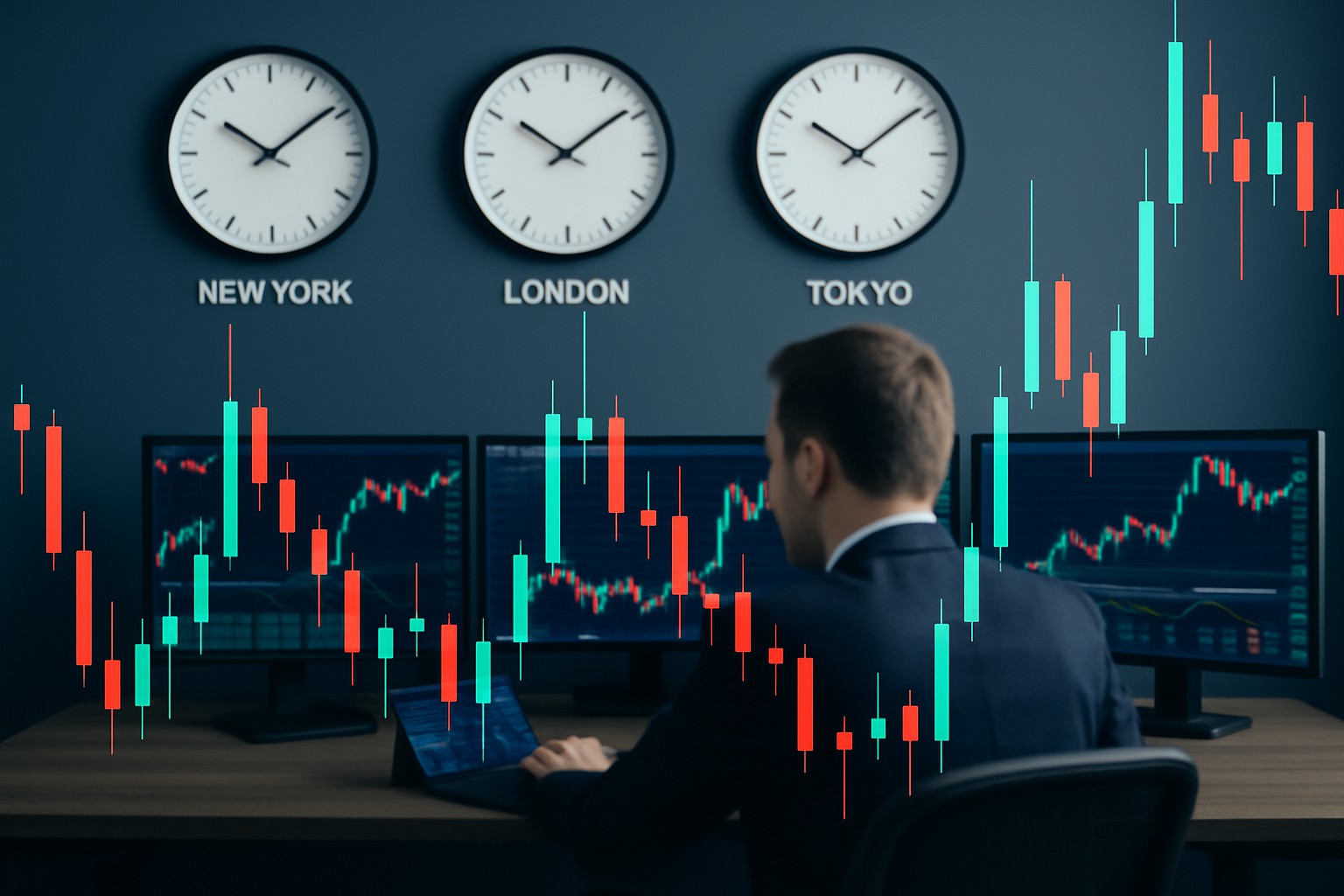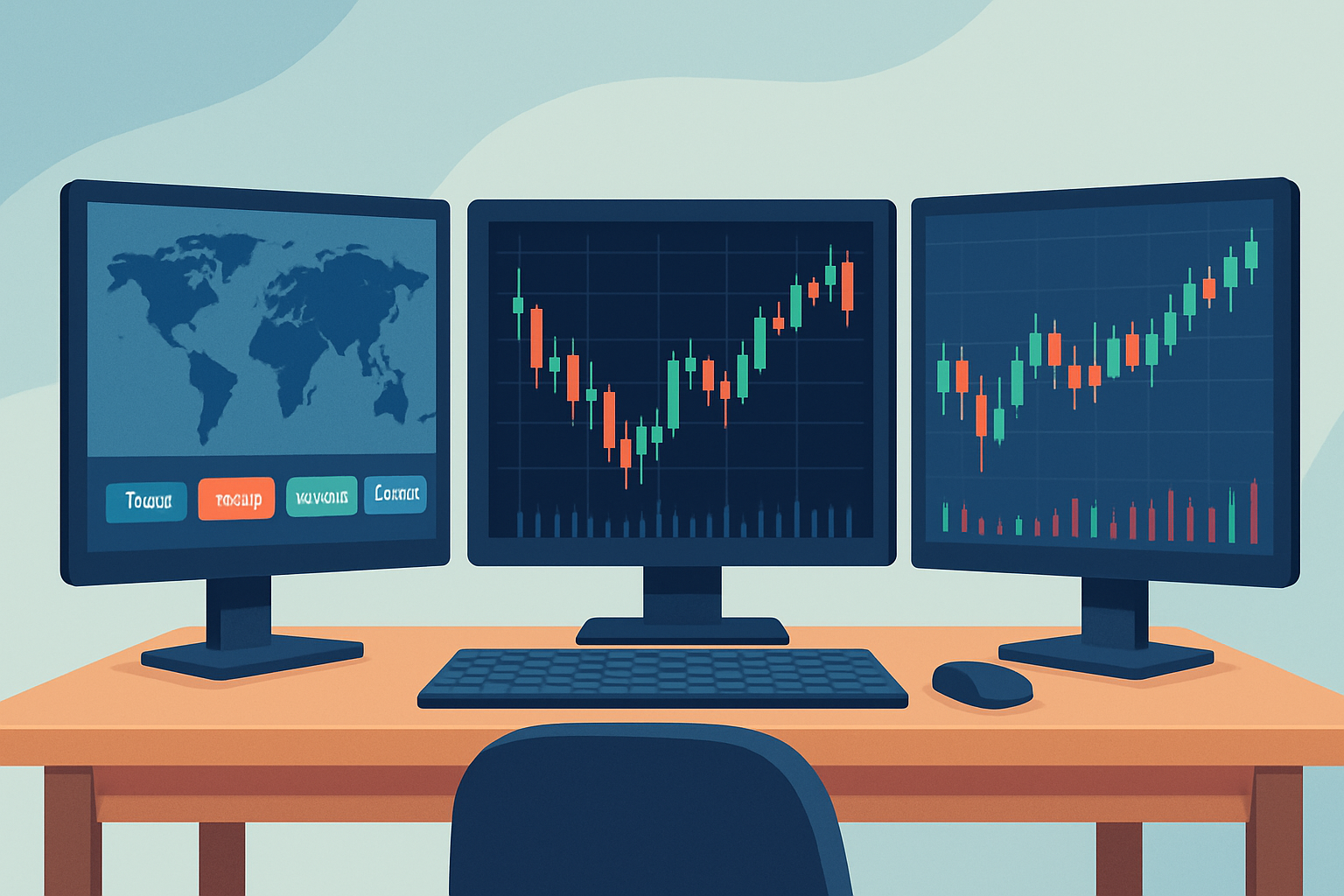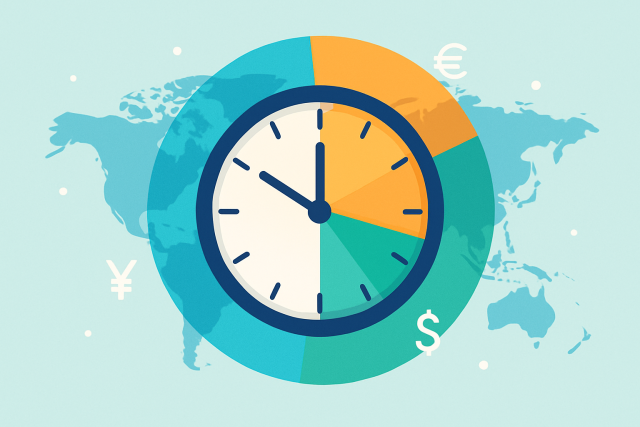
Understanding Leverage in Forex Trading
Leverage in forex allows traders to amplify their market exposure with limited capital. Understand h...

Knowing the best time to trade forex really matters if you want to squeeze the most out of daily price swings. The best moments to jump in are usually when the market is buzzing with activity—when volatility and liquidity hit their peak. Trading during these windows can open the door to more significant price moves, tighter spreads and smoother executions which can all give your returns a nice boost.
Market volatility and liquidity ebb and flow throughout the day, and they’re absolutely key players when it comes to moving Forex prices around. Volatility is what sparks those juicy price swings that traders eagerly chase, while liquidity is all about how smoothly you can jump in and out of trades without getting burned by slippage. Timing your trades to hit the windows of higher volatility and liquidity—typically when major currency hubs are buzzing—usually ups your chances of catching those bigger daily moves.
Forex markets keep the wheels turning nonstop across four main sessions: Sydney, Tokyo, London and New York. Each session has its own trading groove that reflects the vibe of its region and shapes both the volume and the usual rollercoaster ride of currency pair volatility.
| Session Name | Time (GMT) | Typical Volatility | Currency Pairs Most Affected | Trading Volume |
|---|---|---|---|---|
| Sydney | 22:00 – 07:00 | Generally low to moderate, nothing too wild | AUD/USD, NZD/USD | Usually low to moderate, keeping things calm |
| Tokyo | 00:00 – 09:00 | Moderate volatility, enough to keep you on your toes | USD/JPY, EUR/JPY, AUD/JPY | Moderate, not too shabby |
| London | 08:00 – 17:00 | Often high — the heart of the action really kicks in here | EUR/USD, GBP/USD, USD/CHF | High, volumes ramping up and buzzing |
| New York | 13:00 – 22:00 | Typically high, no surprise since it overlaps with London | USD/CAD, EUR/USD, GBP/USD | High, the big leagues showing their muscle |
When Forex sessions overlap volatility and trading volume tend to shoot up because two major financial hubs are firing on all cylinders at once. This overlap draws in more market players and improves liquidity. It also sparks more pronounced price swings, the kind of action that many traders eagerly watch for to catch those daily ups and downs.
Different currency pairs usually shine during trading sessions that sync up with their home market’s business hours or economic significance. Getting a handle on these pair-session connections can really give traders a leg up, helping them guess when volatility is about to crank up and fine-tune their trading schedule to catch the pair at its liveliest.
Mastering the timing of your trades is about more than just watching session schedules. It involves preparing well for the market and tracking key economic events. Matching that timing with chosen technical or fundamental setups helps capitalize on momentum shifts. Nailing the when for entry and exit combined with smart session timing often holds the secret to unlocking consistent profit opportunities in the forex world.
Zero in on those session overlaps like London-New York—they’re goldmines for liquidity and volatility if you time it right.
Keep an eye on an economic calendar to catch those key data drops and news bursts that tend to shake things up.
Lean on daily volatility forecasts to set profit targets and stop-losses that actually feel doable, not just wishful thinking.
Avoid trading during sleepy times like the late Sydney session—trust me, dodging those low liquidity periods saves you from nasty spreads and slippage.
Adjust your position sizes depending on how noisy the market is—go a bit bigger when it’s wild and tone it down when things calm to keep your risk in check.
Using technical tools like the Average True Range (ATR) indicator, volume profile charts and Forex session maps can give you an edge when hunting for the best trading opportunities. These tools provide real-time insights into volatility and price ranges and market activity levels. They help traders tweak their strategies on the fly.
Traders often stumble on timing, nibbling away at their profits and stacking up risk before they realize it. Common slip-ups include jumping into trades too soon before the session has warmed up or chasing price moves that have already run their course—like trying to catch a train that’s long left the station. Then there’s the classic pitfall of overtrading during slow sleepy periods when volatility is barely a whisper. Ignoring key economic announcements or mixing up time zones can lead to bad entry points and losses that could have been avoided.

A professional Forex trading setup displaying global market sessions with real-time charts and session information.
Building a solid trading plan that combines session timing with currency pair choices, volatility indicators and risk management can genuinely boost your trading consistency. By identifying the best time to trade forex through session overlaps and economic releases, while adjusting your risk based on volatility forecasts, you create a thoughtful and methodical approach to better capture daily market swings.
Pick currency pairs that usually shine during the trading hours you actually have time for. Focus on those pairs that tend to be lively when you’re ready to trade.
Keep an eye on those key session overlaps throughout the day and aim to do your heaviest trading during these windows because they often bring the best action.
Lean on volatility indicators like ATR to snag better entry and exit points. Don’t hesitate to tweak your stops as the market mood shifts.
Factor in economic calendar events when planning your trades. Sometimes it’s wiser to steer clear and other times to zero in on key setups around big news.
Stick to solid risk management practices and size your positions sensibly based on expected daily ranges so you don’t bite off more than you can chew.
17 articles published
Transforming the field of technical analysis through innovative charting techniques, Scarlett specializes in pattern recognition and momentum trading strategies for equity markets.
Read Posts
Leverage in forex allows traders to amplify their market exposure with limited capital. Understand h...

Discover how to trade forex for beginners with easy-to-understand concepts, step-by-step guides, and...

Discover how TrendSpider Forex revolutionizes currency trading through AI and automation compared to...

Unlock the secrets of forex time zones and trading sessions to enhance your global trading strategy....
27 articles published
23 articles published
20 articles published
